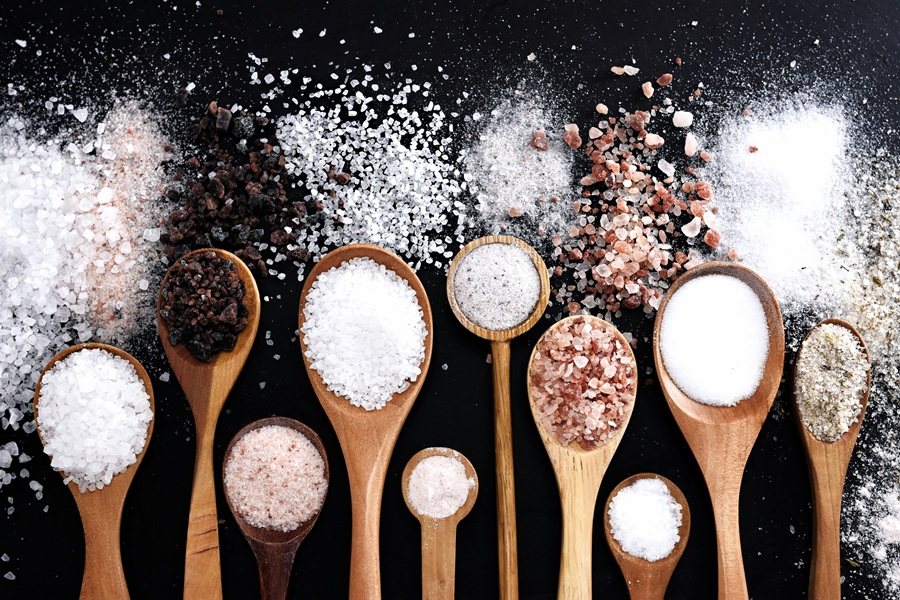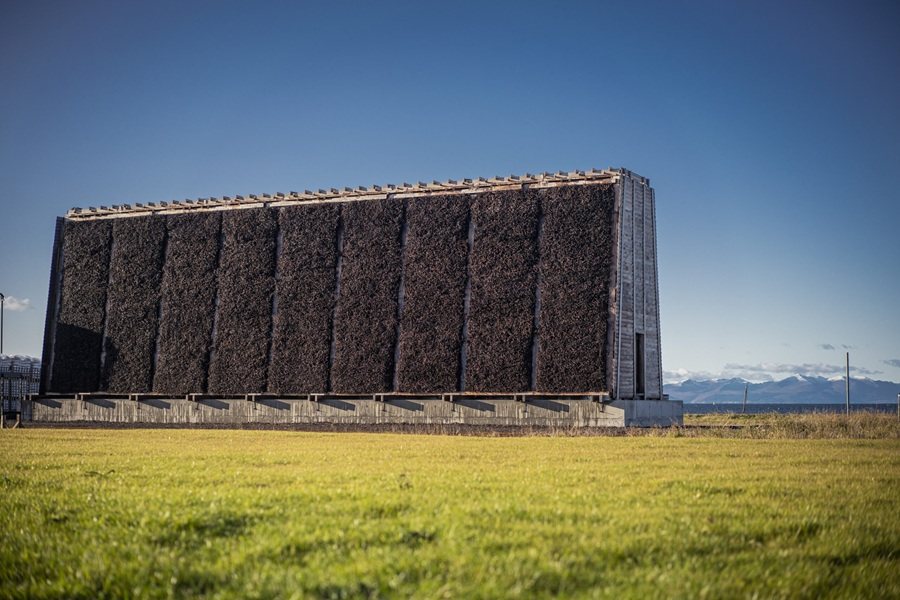What You Need To Know About… Himalayan vs Celtic Salt
I have been fascinated about one of nature’s smallest, most abundant and essential compounds since reading ‘Salt: A World History’ by Mark Kurlansky years ago in bookgroup. This simple compound of Sodium and Chlorine has created and toppled societies, initiated the chemical industry, and been the difference between life or death for many of our ancestors.
We keep 6 different types of salt in Hanover Healthfoods and I’m going to give you a quick breakdown of them all before getting into the nitty-gritty of which is ‘best’.
Our Salts In A Nutshell
Rock Salt: A simple white salt from underground salt deposits.
Himalayan Salt: A rosy pink salt from salt deposits in Khewra in Pakistani Punjab, 250 miles from the actual Himalayas.
Celtic Sea Salt: An artisanal sea salt made from water from the Celtic Sea off the coast of Guerande in France. Naturally grey due to the silt-lined salt pans, and clumpy because of the 15% water content.
Black Salt: A rough, dark crystal salt made in Haryana province in India from underground salt deposits. Much paler in colour when mined, it is fired at high temperature with charcoal, acacia bark and amla, where it gains its dark colour. High in Iron Sulphide which gives it a strong, eggy taste. Also used in Ayurveda as a cooling agent.
Herb Salt: Herbamare is made by the Vogel company using sea salt from the Camargue. This is then ground with fresh herbs and vegetables and infuses for up to 18 months. With its savoury taste it is perfect to perk up plain food and generally less is needed. It also comes a low sodium Potassium Chloride version.
Blackthorn Salt: An artisanal sea salt from Ayrshire. Made by dripping sea water into a tower filled with blackthorn branches and dried by the cool sea air it generates a pure white crystal with less energy input. Many people find crystal flakes give a better flavour.

Salt Is Critical To Life
As a source of Sodium, salt is critical to human health. Without it we are dead. Sodium is one of our key electrolyte minerals. It is needed to maintain correct fluid levels in the body, the volume of our blood, support nerve function, healthy heart rhythm as well as muscular function. If we lose to much of it by doing hard, hot sweaty exercise, or by drinking too much plain water and flushing it out, then things start to go awry.
Most people in the West tend to have too much Sodium in the diet, mainly through foods they have not prepared themselves. It is better to eat the natural, unprocessed foods and then make up the difference by adding salt to your diet yourself.
The medical consensus is that for most adults around 2-3g of salt a day is optimal, without the risk of increasing blood pressure or harming your kidneys. 2-3g of salt looks pretty much like a level teaspoon. Of course, if you are sweating or peeing more you’ll need more. Less if you are addicted to salty processed foods…
Himalayan vs Celtic: The Rumble on the Dinner Table
Himalayan Salt and Celtic Sea Salt have both reached their heights of popularity fanned by social media in the past decade. They are claimed to be healthier, more natural, and, their signature claim is ‘a source of 82 essential minerals’. If you compare either of these salts, one pink, one grey, to a standard supermarket white table salt then it would seem almost self-apparent that there is more going on, purely from their colours. Table salt is highly purified rock salt, often with an anti-caking agent added.
I’ll look at Himalayan Salt first, mainly because there have been more compositional studies on it than Celtic Salt. Himalayan Salt is pink primarily due to its Iron content, effectively rust, but it is primarily 97% Sodium Chloride.
Analyses of Himalayan Salt show that it does include a large variety of different chemical elements, over 80. That is two-thirds of the Periodic Table of naturally occurring elements. And one thing you (hopefully) remember from your chemistry lessons at school is that some of those elements are, somewhat, less than desirable.
Let’s look at some of the more useful nutrients within those 82 and let’s assume that you are getting all of your salt, 3g a day, from this source only. Warning: this is the maths bit…
That teaspoon of Himalayan salt will contain: 1150mg Sodium, 5mg Magnesium, 1.2mg Lithium, 4mg Sulphur, 10mg Potassium, 12mg Calcium, 0.25mg Iodine. You will note these aren’t particularly big numbers (apart from Sodium). However, these are the essential nutrients in which this salt is highest. All the other trace minerals and elements are measured in ppm (parts per million), and low parts per million at that. For example, the amount of Zinc in your teaspoon is 0.007ppm, Iron 0.1ppm, Selenium 0.00015ppm, Boron less than 0.000003ppm. I’m going to stop there because hopefully you can see how nutritionally irrelevant these numbers are.
The rest of the ’82 essential nutrients’ include elements which you should be getting from your diet in abundance (or by breathing). These include Hydrogen, Oxygen, Nitrogen, Carbon and Phosphorus. Also included are elements which don’t react in the body, Gold, Platinum, and Palladium. And then there are a whole host of elements which need no introduction so, rather than reaching peak sarcasm, I will just list a few for your entertainment: Arsenic, Plutonium, Uranium, Mercury, Lead and Polonium. But don’t worry, the levels of these toxic elements are almost infinitesimally small. Only a Peruvian pink salt has been tested at containing a potentially toxic level of Lead.
The bold claim that Himalayan and Celtic salts, as well as the over-hyped sea moss gel, contain 82 ‘essential’ minerals is stretched beyond credibility
On to Celtic Sea Salt and back out with the calculator! It’s much more difficult with Celtic Sea Salt as no one has yet published a complete chemical analysis, instead only giving 24 elements, not 80+. However, with sea salt we can assume that a high number of trace elements are present because of what we know about the composition of sea water.
Per 3g teaspoon of Celtic Sea Salt you get 1g of Sodium which is lower than in its pink friend because Celtic Sea Salt contains 15% water. The wet salt crystals are taken to be dried in cloth sacks and drip dried rather than being subject to heat with other salts. The other main mineral content is Magnesium at 11mg, Potassium 1.2mg, Calcium 3mg, Iron 0.3mg and Zinc 0.06mg. Everything else is lower than this or not actually tested for.
So, yes, there is twice as much Magnesium in Celtic Salt than Himalayan, but it is only 11mg vs 5mg per level teaspoon. Given the RDA is 400mg you’d need to take 20 level teaspoons of Celtic Salt to get even halfway there. However, we do have pretty solid feedback from our customers that adding Celtic Sea Salt to water or juice is improving their hydration levels.
Clearly, the claims for essential nutrients in both these salts is exaggerated. As full breakdowns of other salts are just not available it isn’t possible for me to take my analysis any further. They are both mainly Sodium Chloride but Celtic Salt is lower in Sodium (83% vs 97% in Himalayan) but only because it contains so much water. Both contain tiny amounts of essential minerals and it is probably better that you use these salts than other salts but the nutritional case for the hype around them is not proved beyond doubt.

Iodine
One of the reasons that people use sea salt (and sea vegetables) is that it contains naturally occurring Iodine. Iodine is critical for metabolic function and nerve development in humans. In the UK, table salt does not have Iodine added to it, so sea salts can make up some of the difference. Although consumption of seaweeds is slowly rising, most of the population are still strangers to it. Rising numbers of people avoiding fish and are then denied a rich source of this essential mineral. Although it is widely known that sea salt naturally contains Iodine, and I have to give credit where credit is due, 3g of Himalayan Salt contains maybe 250mcg of Iodine which is a solid contribution to daily consumption.
The Plastic Crisis
An issue regarding anything plucked from the sea nowadays is nanoplastics – tiny pieces of degraded plastic which are now everywhere from the air to the deepest ocean trench. We are still discovering the implications of living with nanoplastics, but the emerging research is unveiling something of a biological hellscape. A study published in May 2024, by Chinese and British researchers, estimated that ‘an average person could be ingesting as many as 6 million nanoplastics per year through the consumption of sea salt alone’. Whilst it may be possible to filter sea water to remove these nanoplastics in the future it is not practical right now. And, I guess, that is where the ‘fossil salt’ from underground deposits may come in.
And After All That – What Salt Do I Use?
It’s a tough one. In the Himalayan vs Celtic prize fight, I think I would come off the fence and give it to Himalayan on points – it’s untainted by microplastics, provably rich in Iodine, and has a low environmental impact when mined. And it looks pretty.
Personally, I am a big fan of Herbamare herbal salt. It packs a lot of flavour with less Sodium overall, but you will have to go with what you think has the best flavour and is the most ethical. And that is a choice only for you.
